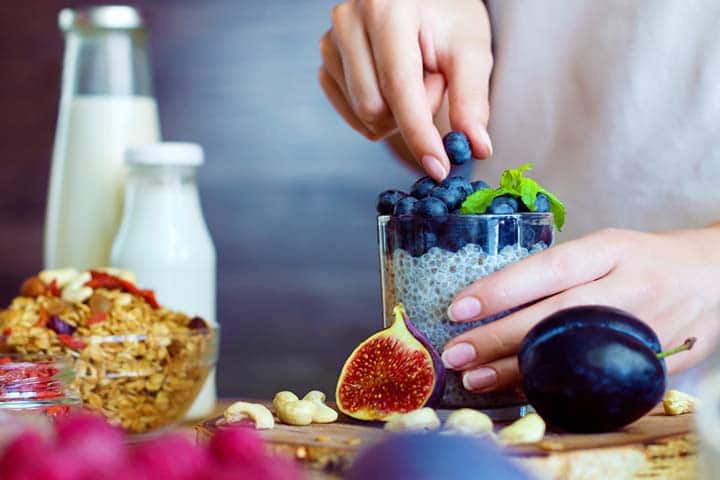Blog, Functional Food
The Rising Trend of Functional Food
Functional food is all over the news these days, with proponents touting their health-saving benefits. Or maybe you’ve heard about the rising trend of functional candy, which is part of the functional foods movement. This trend has likely piqued your interest because you know that healthy foods are part of a healthy lifestyle and you’re likely looking for ways to snack more healthfully. Functional foods meet the rising desire of consumers to be more health-conscious by eating healthier foods. In this article, we’ll discuss what functional foods are, and why people choose functional foods. We’ll also look at three popular functional categories: candy, whole foods, and gummies. Yes, gummies have their own category.
What is Functional Food?
Functional foods are foods that offer health benefits in addition to basic nutrition. For example, oatmeal, a food we know to be healthy, is considered a functional food because of how its high fiber content helps to lower cholesterol levels, reduce inflammation, support immune function, and enhance heart health. In many ways, the label “functional” is another way of saying very healthy, particularly when it comes to whole foods like oatmeal and blueberries. When used as a label for a packaged product, what it generally means is that it’s a healthier version of that snack item, or it has added nutritional supplements like vitamins, herbs, or minerals. This term originated in Japan in the 1980s to distinguish foods with high nutritional value and health benefits. Whole fruits and vegetables are generally considered functional as are nuts, seeds, and grains. These are all commonly considered healthy, nutrient-dense foods. Functional foods are broadly broken into two categories: whole foods and packaged foods. Whole foods are foods like fruits, vegetables, and nuts. Here is a list of common functional whole foods:
-
Fruits like apples, berries, citrus, kiwis, and pineapple.
-
Vegetables like kale, spinach, green beans, broccoli, cauliflower, and zucchini.
-
Nuts like almonds, walnuts, pecans, cashews, and pistachios.
-
Seeds like pumpkin seeds, sunflower seeds, hemp seeds, chia seeds, and flax seeds.
-
Legumes like lentils, split peas, and beans.
-
Whole grains like quinoa, millet, teff, brown rice, and buckwheat.
-
Seafood like salmon, cod, anchovies, sardines, and mackerel.
-
Fermented foods like kimchi, sauerkraut, kombucha, kefir and tempeh.
-
Herbs and spices like cinnamon, turmeric, black pepper, cilantro, rosemary, thyme, and ginger.
-
Beverages such as coffee and tea (black and green) and herbal teas.
This is by far from a complete list of functional whole foods.
Packaged foods include fortified foods, snacks, and candies. Fortified foods, or foods with added nutrients, are considered functional. Foods like bread and cereals are commonly fortified.
Why “Functional”?
People choose functional foods for their health benefits. These health benefits include supplementing nutrition and protecting against disease. Many people use functional foods to optimize their nutrition. Fruits, vegetables, whole grains, nuts, and seeds are nutritional powerhouses that have been shown to support overall health. And, moving on to the second reason, people choose functional foods to prevent disease. For example, fiber prevents diseases like diabetes and heart disease. Antioxidants, which are found in many functional foods, are thought to prevent many diseases, including cancer.
Functional Candy
Functional candy comes in two main types, gummies, and chocolate. There is such a wide range of functional gummy candies that they get their own section. Functional chocolate comes in a multitude of types, flavors, and functions. There is functional chocolate that will help you sleep, give you energy, use less sugar, provide a hearty dose of fiber, give you vitamins, feed you lunch or give you a snack, help with PMS, reduce stress, support anxiety, ease menopause and promote reproductive health for everyone. There are functional candy lollipops with greens, yes greens, if that sounds like a better alternative to greens powder.
Functional Chews and Gummies
There is a wide spectrum of functional chews and gummies, with candy on one end and vitamin on the other. You can find functional gummy bears made with natural sugar and food colorings on the candy end and classic multivitamin gummies on the other. Many more natural gummy candies are sweetened with non-sugar sweeteners like stevia and monk fruit. Many different health concerns and conditions are addressed by functional gummies. Motherhood is supported by gummy multivitamins and gummies for nausea. Children can fall asleep faster with melatonin gummies.
There are functional gummy vitamins for every health need or concern. For example, Seattle Gummy Company (SGC) offers a whole line of gummy supplements and vitamins. Their energy gummy, the Mocca Shot, combines caffeine, herbs, and vitamins for a non-jittery energy boost whenever you need it. (Their gummies can withstand heat, so they can go in your pocket.) Apple cider vinegar (ACV) fanatics can get their fix with SGC’s AVC gummy. This gummy has the highest ACV content of any other comparable gummy on the market. The same goes for their Immunity shot, which is packed with elderberry and zinc. It has the most elderberry of any immune gummy on the market. And, if sleep is elusive, you can find it with SGC’s Slumber Shot, which has the highest dose of valerian root of any sleep gummy out there. Melatonin joins the party and helps you fall asleep quickly and sleep deeply.

